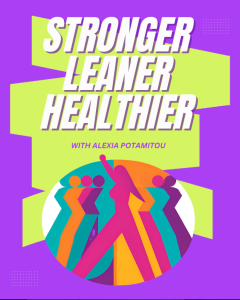Relative Energy Deficiency in Sport (RED-S) is a condition that is caused by your body not receiving enough energy for the amount it is expending. This state is otherwise known as low energy availability (LEA). Male and female athletes (or anyone who exercises daily) are at risk of developing the condition due to factors such as intense training programmes, potential lack of nutrition education, and pressures associated with an ‘ideal body’ for their chosen sport . Consequences of this low-energy condition may alter many physiological systems, including metabolism, menstrual function, bone health, immunity, protein synthesis, and cardiovascular and psychological health. It may also affect performance outcomes including, a decreased training response, stress fractures, impaired judgement, decreased muscle strength and decreased endurance performance . You may be thinking, if the side effects can be that serious, how haven’t I heard of it? Or why isn’t it more common? The reality is, it probably is more common, we just don’t know it yet. RED-S is a relatively new term, and most of its effects are internal and therefore hidden to the eye. You don’t have to be incredibly lean; you can have a normal body weight and still have LEA . The literature describes RED-S as an ‘iceberg’ with its true magnitude ‘largely hidden, and devastating impact likely underestimated’. Therefore, education, detection, and prevention are essential in helping to prevent RED-S.

Match your energy intake with your energy expenditure!
Contrary to what many may think, your body needs a lot of energy even if you were to lie in bed all day. For example, your brain alone needs around 100 – 145g of glucose (carbohydrate) every day to function. This is the equivalent to around 5 to 7 slices of bread! The more you move, the more energy your body will need, so it is vital that individuals match this expenditure increase with their energy intake through the food they eat. Moving does not just include sporting activities, but also things such as household chores or dog walking. Just ensure, if you are thinking about increasing your training, make sure you consider your energy intake to match that increase. We would always advise speaking to a registered nutritionist or dietitian to help ensure you are doing this appropriately, to help maximize your goals and health.
Causes of RED-S
Low energy availability may be caused by an individual simply not realizing that their body needs more energy, or intentionally restricting energy, which covers a spectrum of behaviours from disordered eating to a clinically diagnosed eating disorder . Despite how an individual ends up in LEA, their performance will first likely improve, furthering the narrative that their body is coping, or that they are doing the ‘right’ thing. This is often emphasized by societal praise, such as comments when achieving a new personal best. However, sustained LEA will lead to a stagnation and then deterioration in performance.
What are the symptoms?
Initial symptoms to look out for include colds and general fatigue, as the immune system is weakened due to not enough energy in the system, putting individuals at higher risk of infection . Additionally, when there is not enough energy in the system, biological processes slow, including digestion, causing bloating and IBS symptoms. In females, a key indicator that the body is in LEA is a missing period, however, if on contraception, this can mask the warning sign. Another key sign male and female athletes have, is a bone stress injury or tendon issues, as LEA can increase the likelihood of these niggles/ injuries. Subjective ways you can check your body is in energy balance is by assessing your general mood or how tired you feel day to day and whether you feel bloated or have any IBS symptoms.
What should you do if you are concerned?
If you have noticed one or more of the symptoms, don’t worry, it doesn’t mean that you have RED-S, but you should speak to a healthcare professional to be assessed further. As RED-S is a relatively new condition, it can be better to seek support from a professional who is an expert in understanding the condition. Below are a few links that you can use to clue yourself up before you go to an appointment, as well as some links to professionals who are experts in understanding the condition. Your healthcare professional might suggest that you have a dual X-ray absorptiometry (DEXA) scan, which when assessed by a health professional, will be able to tell you if your body is receiving enough energy from your bone density.


